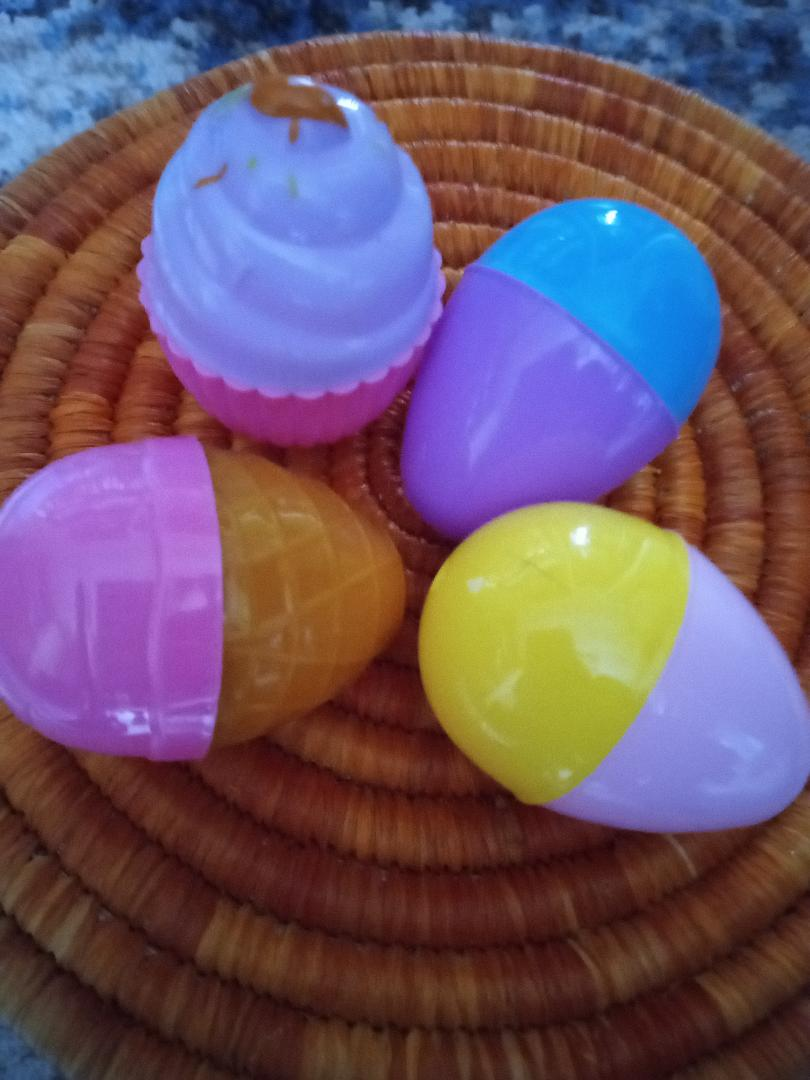I love repurposing and reusing stuff from my recycle bin in new and creative ways, especially as lesson plans. Recently, my one-year-old grandson has been discovering the fun playing with empty recycled plastic Easter eggs. This has inspired me to design hands-on activities, lesson plans and games using recycled plastic Easter eggs and egg cartons. I've includes some free printable activities to supplement.
With Easter coming up, there will be many activities involving plastic Easter eggs: candy hunts, Easter crafts, etc. You might be tempted to throw them away, after use, but don't. There are so many educational activities to use recycled plastic Easter eggs. Save Styrofoam egg cartons as well.
I blogged in an earlier post about using plastic eggs and egg cartons from the recycle bin as preschool learning center math, sorting and fine motor activities. The good news for homeschoolers is that these make great toddler high chair activities too. Activities are easily adjustable to age. My grandkids Juno and Emmett who are 1, love stacking or "nesting" plastic egg halves, just like blocks. We work on placing eggs in egg cartons, to practice eye hand coordination, puzzle skills and fine motor.
Challenge kids fine motor skills in egg assembly activities. The plain colored recycled plastic eggs are easier than the shaped ones like the ice cream ones shown in the picture which can be a little tricky. But it's important for development that some tasks be difficult, especially for special needs and students with autism. We teach to fear failure and frustration when we make things too easy, or do it for them. Children need challenges, to have to work at something and to try new approaches, to learn patience, perseverance and vital problem solving skills.
Use assembled Easter eggs in science learning centers and preschool sand and water table to explore water displacement and floatation concepts. Give toddlers scooping tools to practice fine and gross motor skills in high chair activities. Special needs students will love "fishing" for Easter eggs too!
Have kids "hide" little items or non-messy foods in recycled plastic Easter eggs. Or hide them yourself and have students predict what's inside. This teaches math skills of size estimation.
Sort eggs in egg cartons, by color or design. Last year, when my husband and I visited our grandkids, we brought each child a set of individualized themed Easter eggs (dinosaurs, fish, desserts, sports balls and insects). Then we played an Easter egg hunt game in which each child had to find eggs in his pattern. The 3-year-olds, Lucian and Milo, were able to identify eggs that belonged in their pattern. And Ezra, who was almost two, was able to find his fishy Easter eggs by their color. Extend pattern lesson plans with free printable animal dominoes.
Do an Easter egg hunt, using recycled egg cartons to place found eggs. Each child brings a dozen and finds a dozen. Once her 12 spaces are filled she "wins." A homeschool mom friend of my oldest daughter came up with genius plan. It prevents kids taking too many eggs and best of all teaches math skills. Have older kids group their eggs by two, three, four and six, to learn skip counting, multiplying and dividing. Reinforce with these free printable math flash cards.
For more hands-on lesson plans and recycle bin activities stay tuned to this blog.




